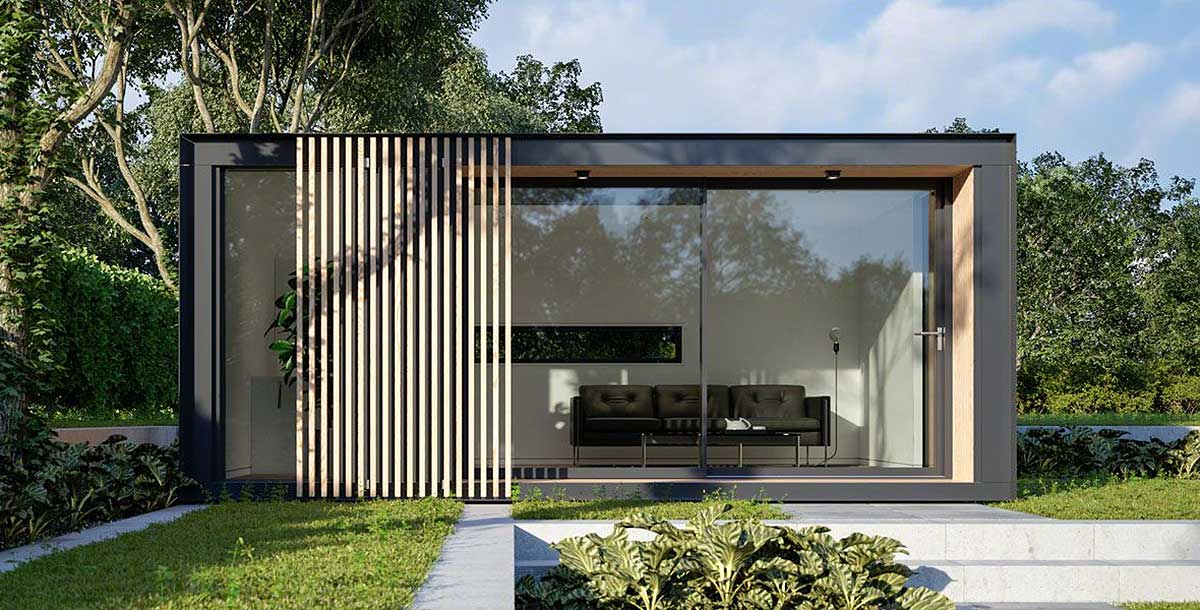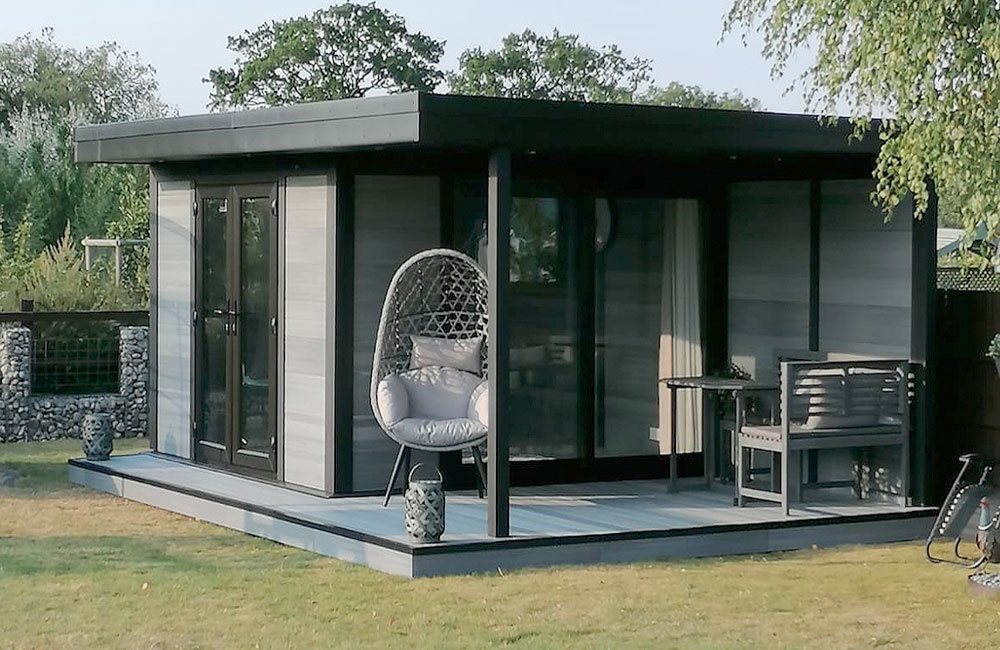The restrictions in place are specific to ensure the appearance and character within conservation zones. This is the case for conservatories, garden rooms or outhouses. Planning permission for conservation areas is determined by the following factors:
Any building or extension which would otherwise be subject to allowed development rights might require planning permission within the conservation area. This includes garden sheds and other outbuildings.
Size and Scale:
The authority for planning may need permission for structures that are of any size, if their dimensions are deemed to be detrimental to the conservation area. The scale and size of new constructions or extensions are regulated more tightly than in non-designated zones.
The location within the property:
Most likely, planning permission will be needed for any extension or building situated on the front and side of a home. The rear of structures could also need permission if is visible from public spaces or if they affect the overall character.
Materials and Design
In conservation areas, the choice of the design and materials used is vital. The selection of materials for any extension or building has to be compatible with the historical or architectural significance of the site. To meet these standards, you'll need planning permission.
Demolition:
To ensure that any changes made to the area are not detrimental to its character, planning permission is required for the demolition of parts of existing structures, for instance outbuildings and boundary walls.
Height Restrictions
There are stricter height restrictions in conservation areas. Any structure that is taller than 2.5 meters, particularly within 2 metres of the boundary must be subject to permission for development.
Impact on surrounding areas
Planning permission is required when the extension or construction has an impact on the appearance or visual setting of the Conservation Area, as well as the views that pass through and exit the area.
Use of the Building:
An outdoor space, outbuilding or studio might not require planning permission if its use is permitted.
Changes to the original design:
Planning permission is required for any extensions that exceed the specified dimensions or volume limits, or alter the appearance of exteriors. This includes conservatories as well as other significant alterations.
Curtilage Structures:
Planning permission is required for buildings that are within the boundaries of a conservation zone. This includes any extensions, new outbuildings or changes.
Trees protected by the forest:
The trees are protected in conservation areas. Tree works consent might be required if are planning to build a structure that could impact trees.
Local Authority Guidelines:
Local planning authorities set rules and regulations that are specific to each conservation zone. They could include precise guidelines regarding what is permissible and what is not specific to the particular characteristics of the particular area.
In short, in order to get planning permission in conservation zones, you must assess how your proposed garden room or conservatory affects the region's historical and architectural character. Consult your local planning authority as early as you can in the planning process to ensure your design is compliant with all relevant guidelines and regulations. View the best how big can you build an outhouse without planning permission for blog recommendations including garden room planning permission, garden room heater, outhouse garden rooms, out house, garden room planning permission, costco outbuildings, garden office electrics, garden room, how to get power to a garden room, costco garden office and more.

What Type Of Planning Permission Will You Require To Construct A Garden Room, For Example?
Planning permission may be required for conservatories, garden rooms or outhouses. There are two crucial aspects to consider: Privacy and Overlooking.
Planning permission is typically required if the proposed structure is likely to overlook adjacent properties and result in privacy loss. This will ensure that the construction won't negatively impact the lives of those in the area.
Overshadowing and loss of light:
A planning permit is usually required if a proposed building will cause significant light loss or overshadowing to nearby properties. The local planning authority will assess the impact of sunlight and daylight to adjacent houses.
Noise and Disturbance
A permit for planning is required if the extension or room is used for activities that generate the sound (such a a home-office that hosts guests, a workshop, music room, etc.). This ensures that the noise levels are acceptable and do not disrupt the surrounding neighborhood.
Character and Visual Impact
The style, appearance and dimensions of the new structure must be in line with the neighborhood's character. Planning permission makes sure that the proposed development does not interfere with the aesthetics and is visually acceptable.
Boundary Proximity:
The construction of structures near the property boundary may need permission to plan, particularly those that are taller than 2.5 meters within 2 meters of the boundary. The reason for this is to prevent any disputes or impacts on the property adjacent to it.
Shared Access and Rights of Way
To ensure that shared access rights of way are not hindered, or negatively affected by the construction planning permission is required.
Neighbors' Objections
Residents in the immediate vicinity have a right to consult on planning applications. Planning authorities consider objections of neighbours when deciding if permission should be granted.
Impact on Property Values:
Although not always a major consideration, significant changes that affect properties of neighbouring houses could affect the need to obtain planning permission. These impacts will be considered by the local authority in making their decision.
Covenants and Deed Restrictions:
The property could be subject to covenants or deed limitations which must be adhered to regardless of approval for planning. These legal agreements could dictate what construction can be allowed and not and could affect neighborhood harmony.
Construction Disturbance:
The planning permission can be used to address concerns about disturbances that could be experienced during construction such as dust and noise. To limit the effect of construction on the nearby neighbors, certain conditions could be imposed.
Impact of Infrastructure
If the construction of the new structure puts an additional strain on infrastructure within your neighborhood (e.g. drainage, parking or road use) A planning permit assures that the impact are assessed and handled accordingly.
Community Consultation:
In certain cases it is necessary to seek out a larger community especially when it comes to large or controversial projects. This allows for a more democratic method of decision-making that is based on local opinion.
Summary: Neighborhood concerns are a key factor in the approval process of garden rooms, conservatories or outhouses. To avoid having a adverse impact on living conditions as well as privacy and lighting levels in the area, it's vital that any proposed development doesn't negatively affect them. In consultation with the local planners and early engagement with neighbors will aid in addressing these issues. Check out the most popular garden room extension costs for blog tips including my outhouse, composite garden rooms, out house, garden room or extension, garden outhouse, garden room or extension, do i need planning permission for a garden room with toilet, out house for garden, garden rooms, myouthouse and more.

What Planning Permits Are Required For Garden Rooms, Etc. With Regard To Limitations On Location?
The position of garden rooms, or conservatories, along with outhouses, office buildings and garden offices can be a significant factor in determining if planning permission is required. Here are some key criteria for location closeness to boundaries:
Buildings within 2 metres of the property line should not exceed 2.5 meters in height. If the building's height exceeds this amount, then a planning permit is required.
Front of the property
The permitted development right does typically not allow extensions or forward-facing buildings.
Right-hand side of property:
Side extensions are restricted by height and dimension restrictions, and may require planning permission if they are extended beyond the existing side wall.
The rear of the property:
The size and height of rear extensions as well as garden rooms at the rear of the property is restricted. The planning permission must be obtained when these extensions exceed the permitted building boundaries.
Designated Areas
In National Parks, World Heritage Sites and Areas of Outstanding Natural Beauty there are stricter rules. Planning permission is required for any new structure regardless of the size.
Heritage Buildings
Listing buildings are subject to strict regulations. Any modification, addition or expansion will generally require planning permission and a listed building permit regardless of where it is located on the property.
Green Belt Land:
To protect open space, construction on greenbelt land is restricted. Building on green belt land is severely restricted to preserve open space.
Zones at risk of flooding
If the property is in an area that is at risk of flooding, there are additional regulations to ensure that the proposed structure doesn't exacerbate the risks. It is possible to get planning permission or a flood analysis.
Urban vs. Rural settings:
Urban and rural areas have often different regulations. Rural homes are more flexible in their restrictions regarding the size and position of outbuildings. This varies greatly.
Highways and Public Rights of Way
It is possible to obtain planning permission when a construction site is near to highways or public rights of way. This will ensure the construction does not hinder views, safety or access.
Shared Ownership or Leasehold:
If you own a property that is leasehold or part of a shared ownership scheme it could be necessary to obtain additional approval from the property owner or the managing entity. There may be a need for permission for planning based on the local laws.
Adjacent to other structures:
If the structure being built is to be built adjacent to existing structures or buildings that are located near neighboring property, planning permission could be required to ensure that there isn't any negative impact on adjacent structures or land.
To get advice on your specific property's circumstances and the location, it's recommended to talk to the local planning authority. The regulations vary widely based on local policies. Compliance with all relevant limitations will help you avoid legal issues as well as potential penalties. Have a look at the most popular concrete free foundations for website tips including costco garden room, garden office hertfordshire, garden room planning permission, outhouses for garden, composite garden rooms, garden rooms, costco garden rooms, armoured cable for garden room, garden room planning permission, conservatories and garden rooms and more.
